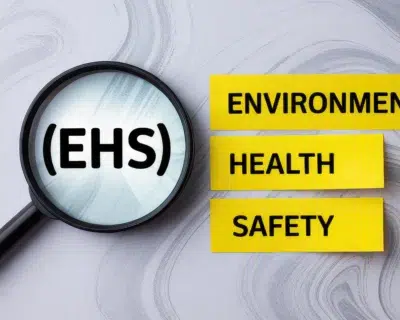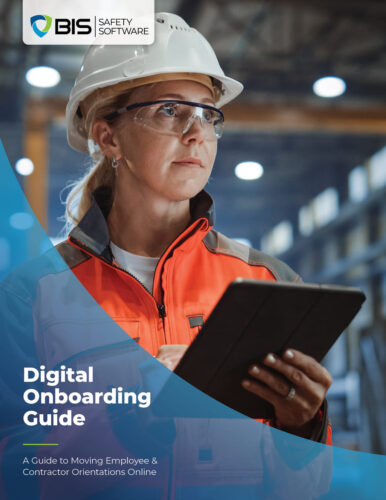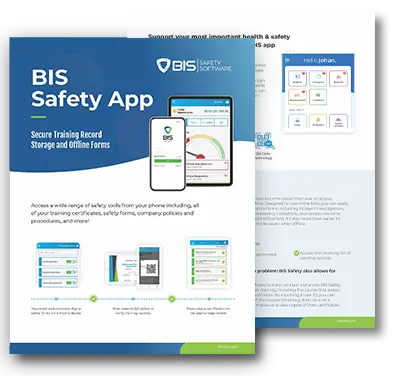
How To Choose Incident Management Software in 2022
The safety industry is always innovating, and there are now many technologies that can help you protect your employees. Also, governments are constantly updating their regulations, and this includes asking companies to use safety tools with proven results. However, workplace accidents remain a threat, even with all the technologies available to prevent them. Our neighbours in the north verify this with the most recent data from the Association of Workers Compensation Boards of Canada (AWCBC), which covers 2019:
- 271,806 lost time claims.
- 925 fatal accidents.
This represents an increase in workplace accidents compared with 2018, where the number of lost-time claims was 264,438. On the positive side, the number of fatal accidents decreased from the 1,027 reported in 2018. Workplace accidents in Canada were steadily decreasing between 2000 and 2015, but unfortunately they have been on the rise since 2015. As you might expect, a large fraction of the reported accidents happened in sectors like construction and manufacturing.

(NOTE: We’re aware that 2019 figures may seem old by now, but keep in mind that the AWCBC takes 2-3 years to gather and publish annual data. Collecting all this information is a challenge, and they want to make sure it’s accurate.)
Companies must be aware that the “lost-time claims” number only counts accidents where the affected worker was compensated. This number would be much larger if the AWCBC also included minor accidents. To protect your employees better, and improve your workplace safety overall in 2022, you can use incident management software.
Incident Management Software: 5 Key Features to Look For
Ideally, incident management software should help you track all workplace incidents, big or small, and also near misses. The software should also help you find causes, so you can address them and prevent future accidents. To achieve this, you need a platform that allows simple communication, while providing useful information for decision-makers.
Here are some of the best features you can have when using incident management software:

- Mobile compatibility
- Intuitive and user-friendly interface
- Generating smart reports automatically
- Compatibility with other business software
- Automatic alerts and notifications
1) Mobile Compatibility
Your employees will be using different types of mobile devices, and you need to ensure compatibility for everyone. For example, some employees may prefer to use a smartphone with Android or iOS, while others may feel more comfortable using Windows on a laptop. Ideally, you should avoid software that only runs with specific devices and platforms.
Mobile compatibility also makes your incident management software more useful, since employees can report incidents as they happen. If your software does not run on mobile devices, your employees must wait until they can use a computer. The incident report will eventually be available, but some details may be forgotten by then.
The benefits of mobile compatibility become evident when dealing with serious accidents and other emergencies. Every second counts in these cases, and being able to report incidents ASAP is priceless.
2) Intuitive and User-Friendly Interface
If you pick software that is hard to learn, you will also have a hard time convincing your employees to use it! You cannot assume that everyone is tech-savvy, especially when there are different age groups in a company. If you want to shorten the learning curve, choose incident management software that is intuitive and user-friendly.
Software that is easy to use also achieves its purpose more effectively. Incident management software should simplify reports and problem-solving, instead of adding more steps and complexity. When your employees are busy dealing with an incident, hard-to-use software tends to add stress. The incident reporting process should be as simple as possible, like answering a text message or social media comment.
3) Generating Smart Reports Automatically
Data is necessary when making decisions, but large amounts of raw data can be confusing! However, if your incident management software generates automatic reports, you can immediately detect risk areas that need attention.

You can also get a clear picture of all the accidents happening in the workplace, with important facts like their frequency and how severe they are. There are many possible ways to use safety data: for example, you can filter and compare incidents by business department and by location.
Automatic safety reports also give you constant feedback of how your company’s safety program is performing, so you can improve it continuously. Hidden risks can be detected and eliminated quickly, before a major accident happens. However, first you need a software solution that provides ongoing reports.
4) Compatibility with Other Business Software
Software has become a basic tool in the modern business world, and a single company can have applications and programs from multiple providers. To make the most out of incident management software, you need to make sure it integrates easily with the systems your company is already using. This makes life easier for your IT team, and your employees can get used to the software faster.
Compatibility will save you many headaches, especially when you need to share files between different applications. The last thing you would want is purchasing an expensive software, only to find that you can’t use all its features due to compatibility issues.
5) Automatic Alerts and Notifications
Safety risks are always present, especially in heavy industries like energy or mining. This means accidents can happen at any time, even when key employees are focused on other tasks or away from their office. Having incident management software with automatic notifications is very helpful in these cases, since it makes sure that everyone is well informed.
Automatic alerts and notifications also save valuable time. When an incident happens, your employees can give their full attention to the issue, while the software makes sure that managers and supervisors are notified. Your employees will not waste time sending the incident report to everyone who must know.

Conclusion
Accidents are on the rise in Canadian workplaces, and you can confirm this with the annual reports on the AWCBC website. However, your company doesn’t have to be part of the statistics: Safety Management System can help you protect your employees better.
Incident management software can help you keep track of all incidents, identifying their causes and removing risks more efficiently. However, you will achieve better results if your software is compatible with any device and platform, while being easy to learn and use. Automation is also a very useful feature: the best incident management software can generate smart reports to help with decisions, while sending automatic alerts in response to incidents.





































